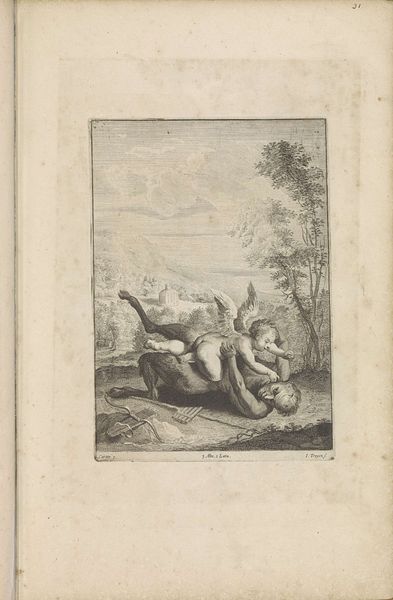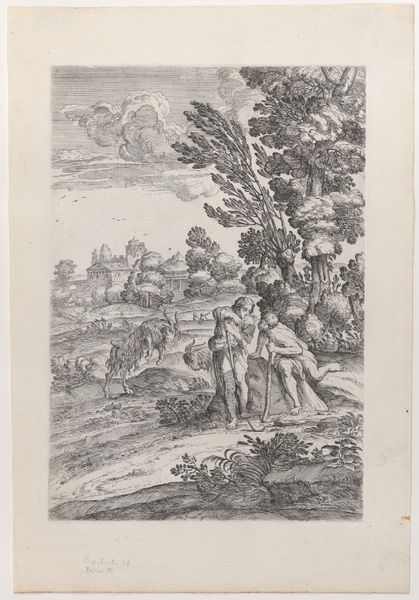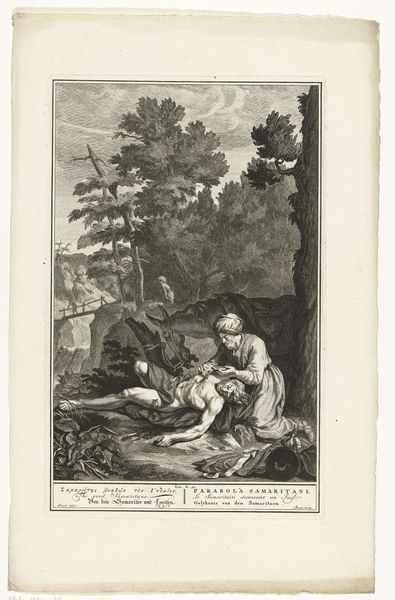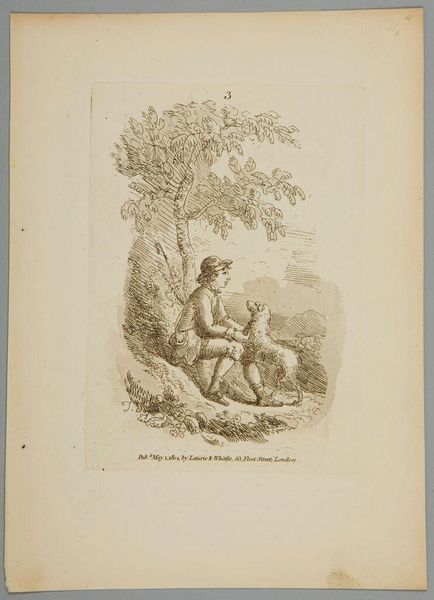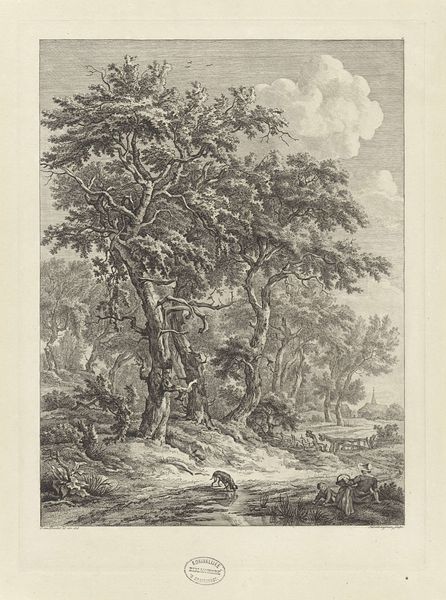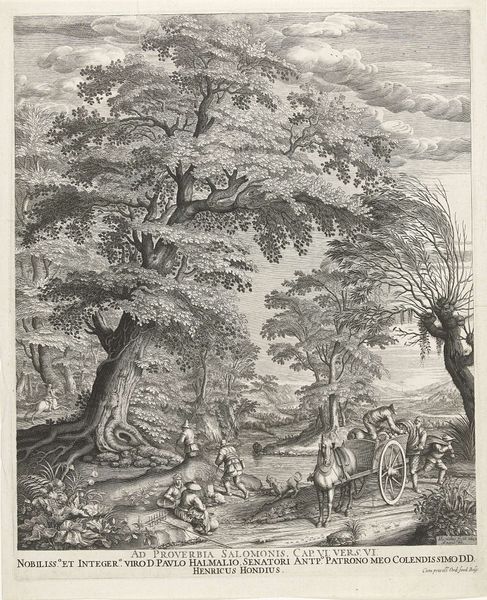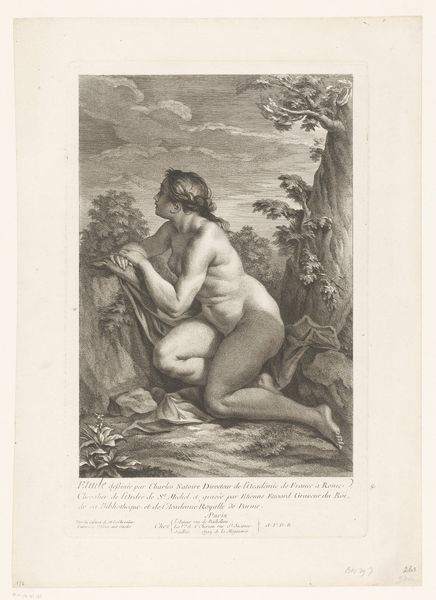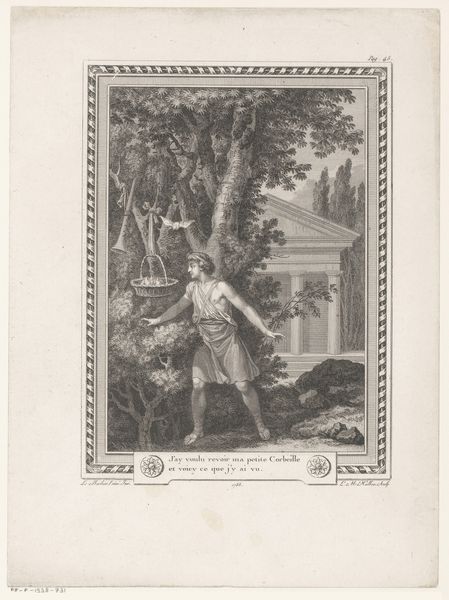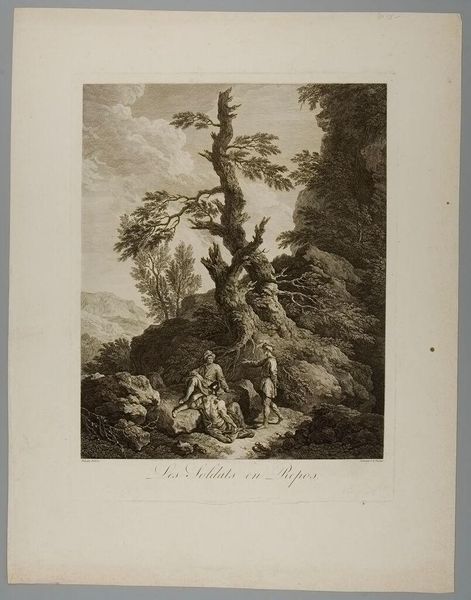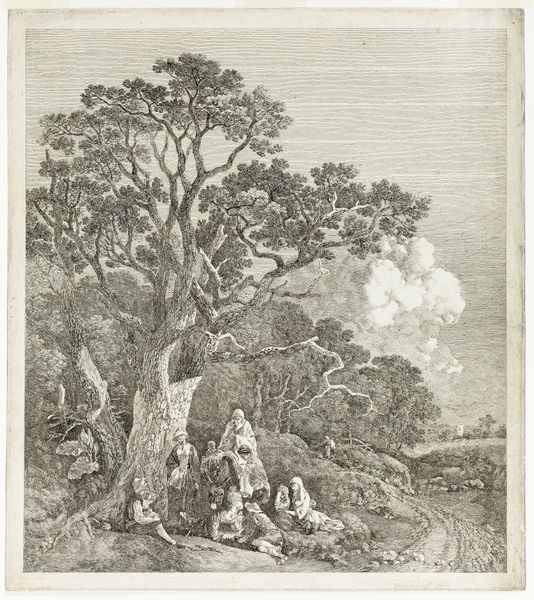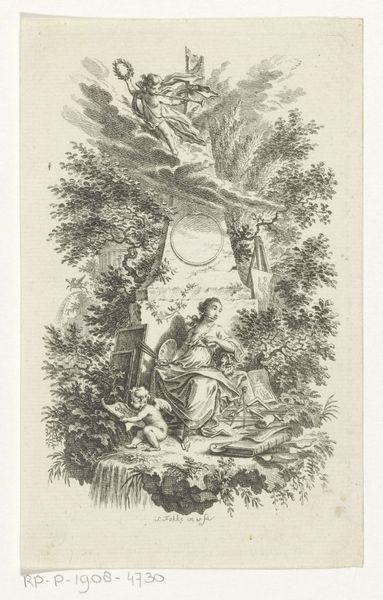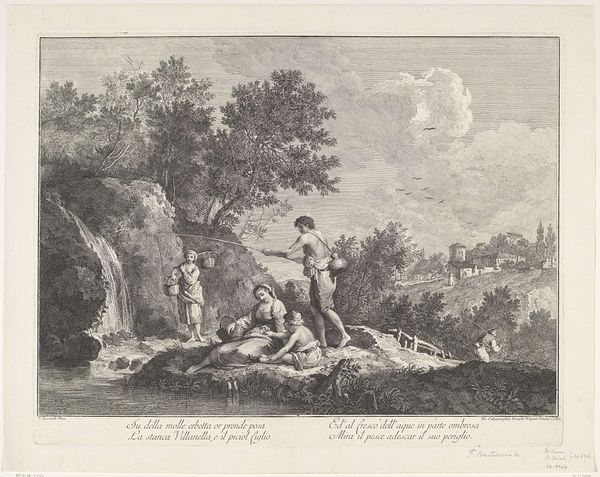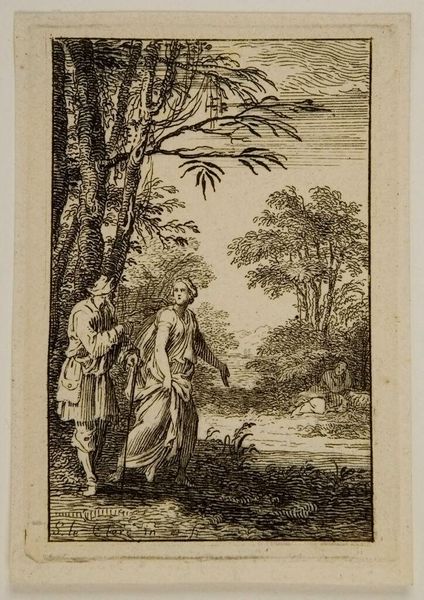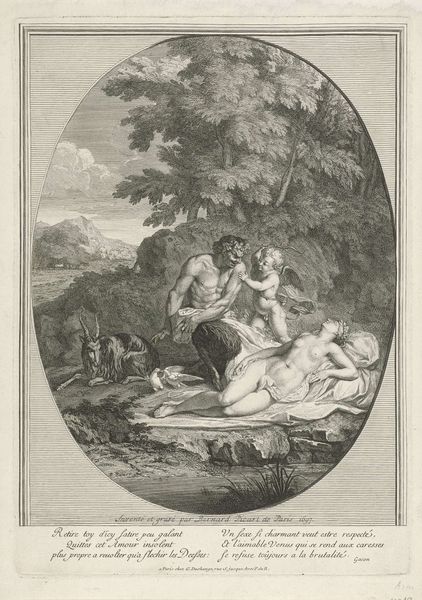
#
pencil drawn
#
light pencil work
#
ink paper printed
#
pencil sketch
#
charcoal drawing
#
pencil drawing
#
ink drawing experimentation
#
pencil work
#
tonal art
#
watercolor
Dimensions: height 409 mm, width 256 mm
Copyright: Rijks Museum: Open Domain
Editor: This is Francesco Bartolozzi's "Atalanta en Hippomanes," likely created between 1791 and 1793, using ink on paper. I find the composition intriguing; the figures are classical, but the landscape feels both idyllic and a little staged, almost theatrical. How do you interpret this work, considering its historical context? Curator: The staging you observe is quite relevant. Think about the rise of Neoclassicism during this period. How did artists grapple with representing classical stories and ideals within the social and political context of their time? Were they merely illustrating stories, or were they subtly commenting on contemporary issues through allegory? Editor: So, is it less about the literal race between Atalanta and Hippomanes and more about...what exactly? Curator: Consider the public role of art at the time. Art academies and patronage systems influenced artistic production. What message might this print be conveying to its audience? Does the composition emphasize the triumph of Hippomanes, perhaps symbolizing ambition and cunning prevailing over natural talent or female strength? And how might this narrative reinforce or challenge existing social norms? Editor: I didn’t even think of that! It’s interesting how a seemingly simple mythological scene could reflect the complex power dynamics of the time. Is there anything else that can provide insights into the contemporary reading of this work? Curator: The widespread distribution of prints significantly broadened the reach of art and ideas. It became more accessible than painting, which was traditionally reserved for wealthier audiences. Consider, too, the rise of national museums. Who got to determine which artworks deserved preservation and public display, and who were these displays designed to serve? Editor: Thinking about access and intent, this gives me so much more insight into not just this piece, but art's role within the era! Curator: Indeed. The visual arts serve as a tangible record of how individuals perceived and interacted with their world and that history deserves consideration.
Comments
No comments
Be the first to comment and join the conversation on the ultimate creative platform.
